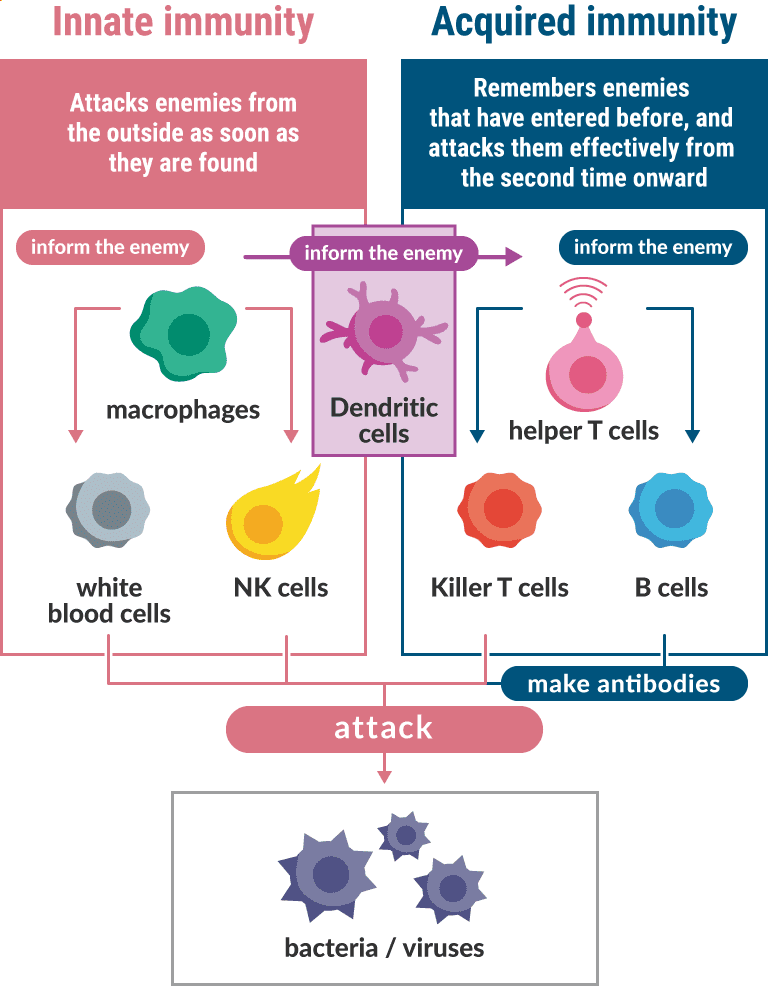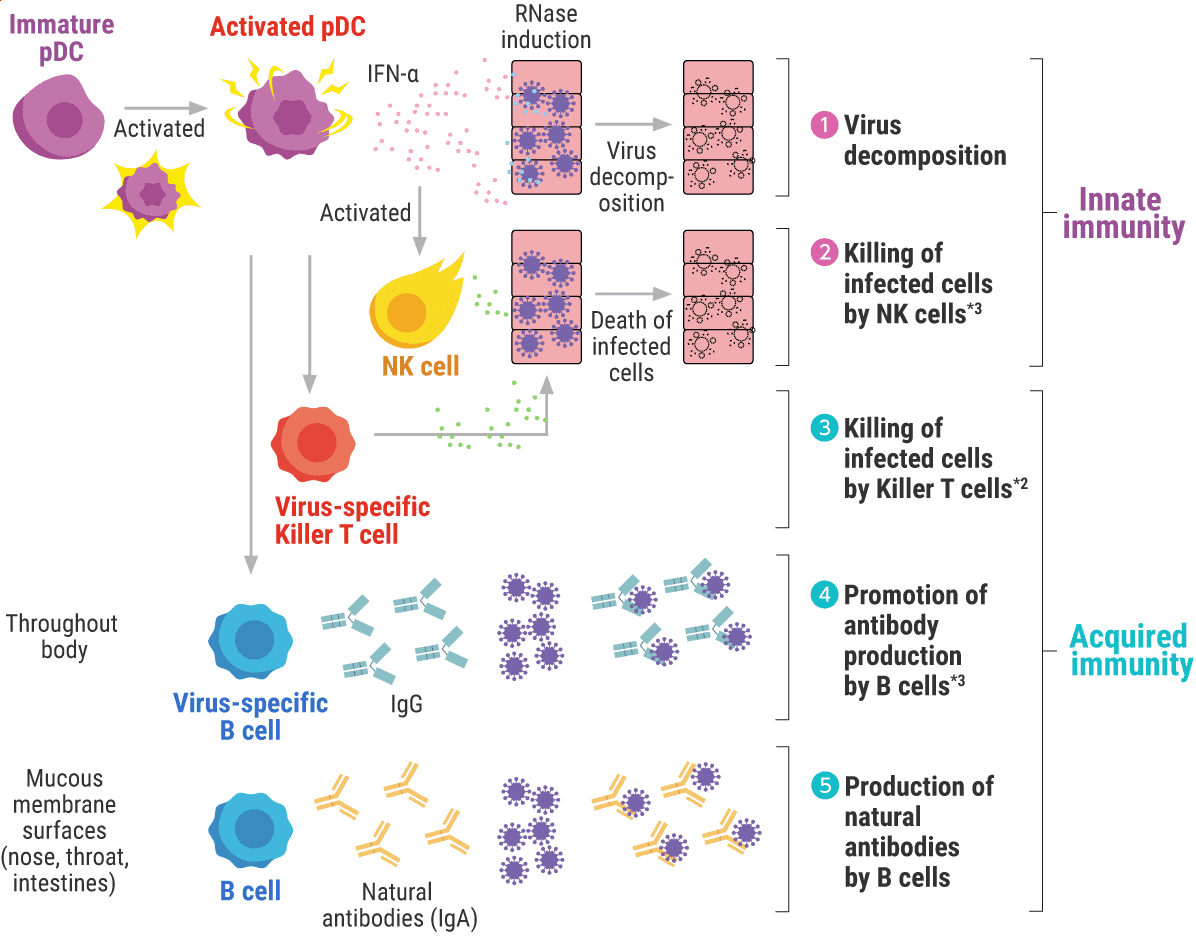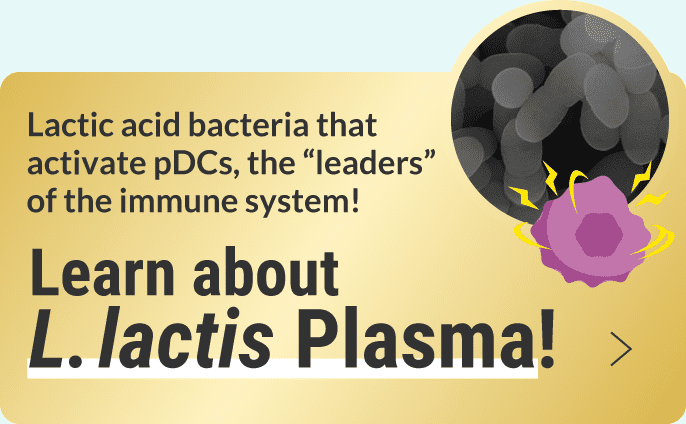- TOP
-
What is
immunity? -
How to keep
the immune system? -
L. lactis Plasma
- What is L. lactis Plasma?
- Effects of L. lactis Plasma
-
Academic Reports and
External
Announcements

Innate Immunity and
Acquired Immunity
Why is it that we don't catch colds every day, and why are we less susceptible to illnesses that we've had before?
That's thanks to the immune system.
There are two major phases of the immune system.
"Innate immunity" is the first to fight pathogens that enter the body, and any of the pathogens that pass through the
innate-immunity defenses are then fought by "acquired immunity".

- macrophagesWhen enemies (foreign matter such as bacteria or viruses) enter the body, macrophages swallow them whole. Their name, which means "big eater", comes from this behavior. They also serve to convey information about enemies to other immune cells.
- white blood cellsWhite blood cells mainly swallow and dispose of bacteria. After killing the bacteria, the white blood cells themselves die and become pus.
- NK cellsWhen NK cells find cancer cells or virus-infected cells, they attack them on their own.
- helper T cellsWhen they receive notification from dendritic cells, macrophages, etc. that there is an enemy invasion, they convey the notification to Killer T cells and B cells.
- Killer T cellsThey receive commands from dendritic cells, helper T cells, etc. to kill cells that have been invaded by enemies from the outside.
- B cellsThey receive commands from dendritic cells, helper T cells, etc. to produce antibodies to fight off bacteria and viruses.
Some B cells can memorize the characteristics of antigens. - Dendritic cells"Dendritic cells" which belong to innate immunity convey information about antigens ("enemies") to other immune cells, and serve as a bridge between innate immunity and acquired immunity.
What are pDCs?
Dendritic cells are divided into two major groups,
and the ones that are especially active when a virus invades are pDCs (plasmacytoid dendritic cells).
pDCs are normally dormant cells, but they are activated when they encounter antigens ("enemies").
Activated pDCs act as "leaders" that give instructions to various immune cells in both the "innate immunity" and "acquired immunity" phases, thereby regulating immune functions.
Role of pDCs as "leaders" of the immune system
pDCs play an important role in defense from viral infection.

Reference: modified from "Chemistry and Biology" 53(9): 626-632, 2015.
*1 J. Exp. Med. 147: 1314-1333, 1978
*2 Immunity 35, 958-971, 2011
*3 J. Exp. Med. 205, 1621-1634, 2008 Immunity 34, 247-257, 2011


